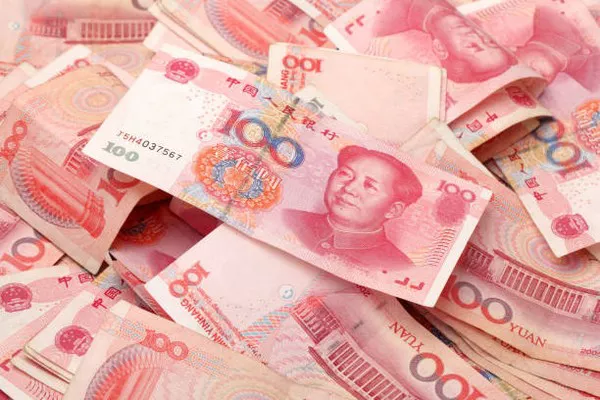As one of the world’s major currencies, the Chinese Yuan (CNY) holds significant influence over global trade and investment. Understanding the factors that drive its value and predicting its future movements are crucial for traders, investors, and businesses alike. In this comprehensive analysis, we delve into various aspects of the CNY prediction, including current trends, economic indicators, global market influences, expert analysis, historical data, government policies, investment strategies, risks, opportunities, forecast scenarios, and practical advice.
Current CNY Value
At the time of writing, the exchange rate of CNY to USD stands at approximately 6.35. Recent trends indicate a gradual appreciation of the Yuan against the US dollar, reflecting China’s economic resilience amid global uncertainties. However, fluctuations in the exchange rate are influenced by a multitude of factors beyond simple supply and demand dynamics.
Economic Indicators
Several key economic indicators play pivotal roles in shaping the value of the CNY. China’s GDP growth, trade balance, inflation rates, and monetary policy decisions are closely monitored by market participants. Robust GDP growth, supported by domestic consumption and infrastructure spending, generally strengthens the Yuan. Conversely, trade imbalances or inflationary pressures may exert downward pressure on the currency. The People’s Bank of China (PBOC) plays a crucial role in maintaining currency stability through its monetary policy interventions.
Global Market Trends
Global events and market trends have a profound impact on the CNY’s value. Trade tensions between the United States and China, geopolitical developments, and shifts in investor sentiment towards emerging markets all influence currency fluctuations. Additionally, changes in commodity prices, particularly those of key imports such as oil and metals, can affect China’s trade balance and, consequently, the value of the Yuan.
Expert Analysis
Insights from economists and market analysts provide valuable perspectives on the future movements of the CNY. Many experts emphasize the importance of China’s economic reforms, including efforts to rebalance the economy towards domestic consumption and innovation-driven growth. However, concerns over debt levels, financial market liberalization, and geopolitical uncertainties contribute to divergent views on the CNY’s trajectory.
Historical Data
Examining historical trends offers valuable insights into the factors driving the current state of the CNY. China’s transition from a centrally planned to a market-oriented economy has been accompanied by significant fluctuations in its currency’s value. Notable events such as the 2008 global financial crisis and China’s accession to the World Trade Organization have shaped the Yuan’s evolution on the international stage.
Government Policy
Chinese government policies play a pivotal role in influencing the strength of the CNY. The PBOC employs various tools, including interest rate adjustments, foreign exchange market interventions, and capital controls, to manage currency fluctuations. Additionally, initiatives such as the Belt and Road Initiative (BRI) and the Greater Bay Area development plan contribute to China’s economic growth and internationalization efforts, thereby impacting the Yuan’s value.
Investment Strategies
For investors considering positions in CNY or related financial instruments, prudent strategies are essential. Diversification, hedging against currency risks, and staying informed about economic developments in China and global markets are key considerations. Long-term investors may seek exposure to Chinese assets as part of a diversified portfolio, while short-term traders may capitalize on volatility using derivative products.
Risks and Opportunities
Investing or trading in the CNY entails both risks and opportunities. Currency fluctuations, geopolitical tensions, and regulatory changes can create uncertainty for market participants. However, China’s continued economic growth, structural reforms, and increasing integration into global financial markets present opportunities for those willing to navigate these challenges.
Forecast Scenarios
Predicting the future movements of the CNY involves assessing various economic conditions and modeling different scenarios. Bullish scenarios may envision continued GDP growth, favorable trade dynamics, and prudent monetary policy, leading to CNY appreciation. Conversely, bearish scenarios may involve external shocks, trade disruptions, or domestic challenges that could weaken the Yuan.
Practical Advice
For forex traders, investors, and businesses dealing with CNY, practical advice is paramount. Stay informed about economic indicators, geopolitical developments, and government policies that may impact the currency’s value. Utilize risk management techniques such as stop-loss orders and position sizing to mitigate potential losses. Consider consulting with financial advisors or experts with expertise in Chinese markets for personalized guidance.
See Also What is the CNY Pegged to?
In conclusion, understanding the dynamics of the CNY and predicting its future movements require a comprehensive analysis of economic indicators, global market trends, expert insights, historical data, government policies, investment strategies, risks, opportunities, forecast scenarios, and practical advice. By staying informed and adopting prudent strategies, market participants can navigate the complexities of China’s currency dynamics effectively.


